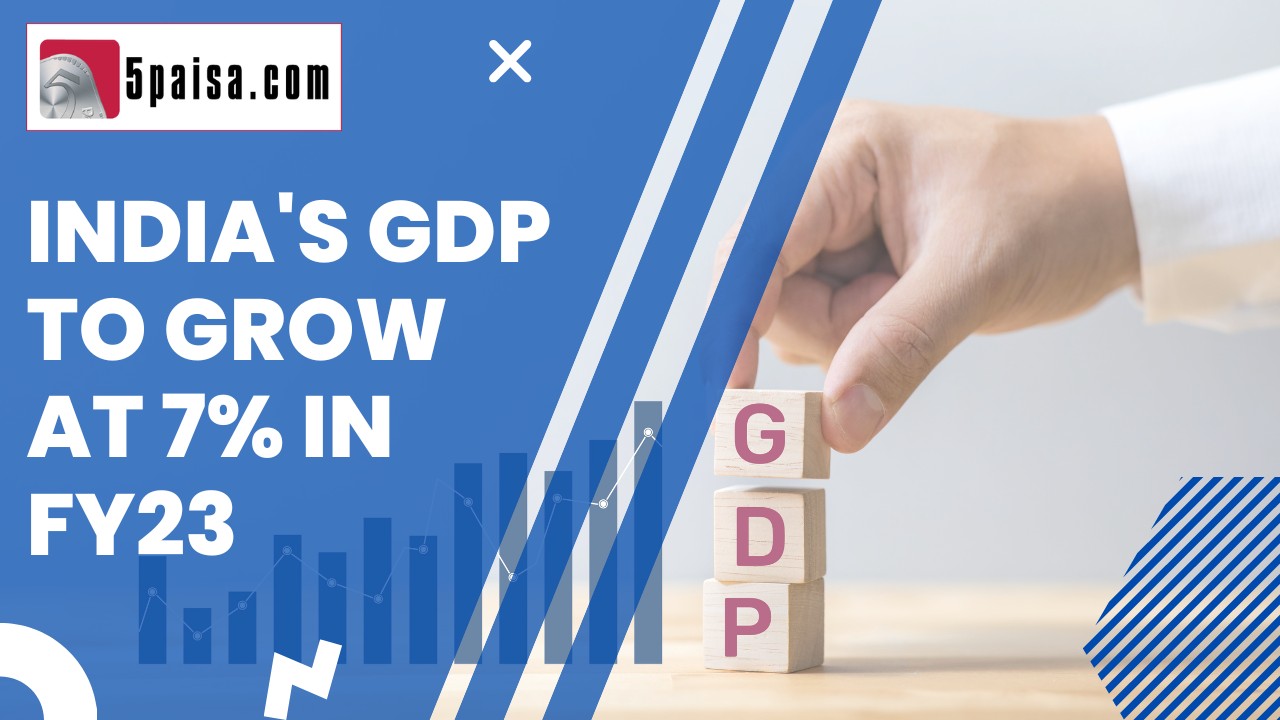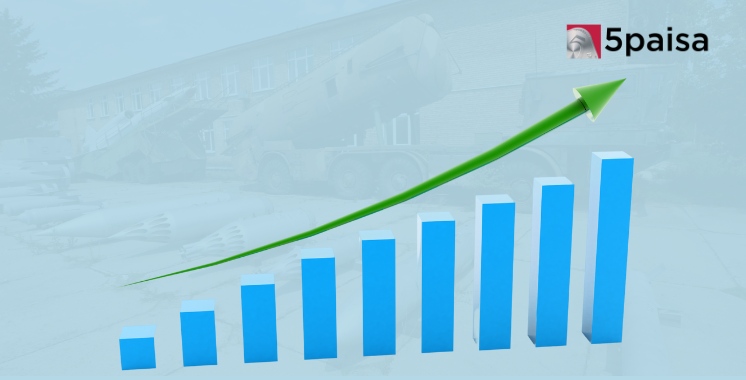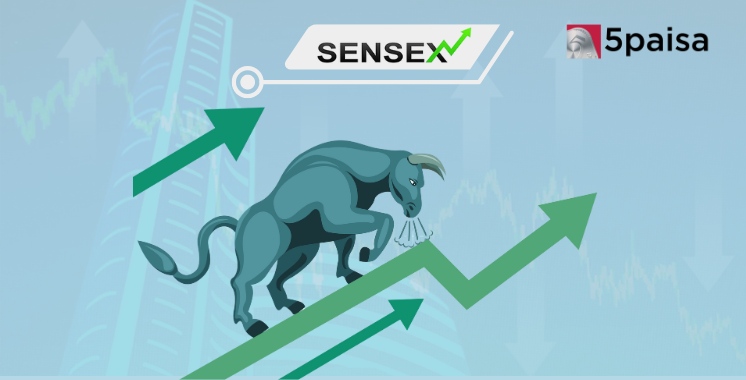Indian Rupee Poised for Best Weekly Gain in Two Years Amid Strong US Dollar Inflows
First advance estimates pegs FY23 GDP growth at 7%

The MOSPI has just put out the first advance estimates (AE) of full year GDP for FY23. This is a projection based on existing data and other high frequency indicators. For the full year, the first estimate pegs GDP at 7% and GVA at 6.7%. GVA (gross value added) is considered to be a more reliable measure of GDP since it excludes the impact of indirect taxes and subsidies to give a more realistic picture of actual production of goods and services in the economy. The second advance estimate of FY23 GDP will be released on 28-Feb along with the Dec-22 quarter GDP data. In addition, the final full year GDP for FY23 will be released on 30th May 2023, exactly 2 months after the close of the fiscal year.
The table below captures GDP for last 12 quarters.
|
Quarter |
Real GDP Growth (%) |
|
Quarter ended December 2019 |
+3.2% |
|
Quarter ended March 2020 |
+2.8% |
|
Quarter ended June 2020 |
-23.8% |
|
Quarter ended September 2020 |
-6.6% |
|
Quarter ended December 2020 |
+0.7% |
|
Quarter ended March 2021 |
+2.5% |
|
Quarter ended June 2021 |
+20.1% |
|
Quarter ended September 2021 |
+8.4% |
|
Quarter ended December 2021 |
+5.4% |
|
Quarter ended March 2022 |
+4.1% |
|
Quarter ended June 2022 |
+13.5% |
|
Quarter ended September 2022 |
+6.3% |
Data Source: MOSPI
Projecting GDP and GVA for FY23
GVA (gross value added) is increasingly becoming a very strong and veritable alternative to GDP; more so since it is adjusted for indirect taxes and subsidies and hence gives a more realistic picture. Let us look at the GVA first. For FY23, the GVA is estimated to show 6.7% accretion yoy over FY22 to Rs145.19 trillion. This is despite several headwinds like Fed hawkishness, higher inflation, slowdown fears and falling exports. Let us now turn to the GDP figure. Real GDP for FY23 is estimated to grow 7.0% yoy to Rs157.60 trillion. The good news is that this growth over a normalized year so one cannot say that there were gains from the base effect. GDP growth estimate of 7.0% is redemption of India growth story.
Driving indicators and sectoral indicators of GDP for FY23
What we know is that GDP for FY23 is estimated to grow at 7% yoy, which is a feel-good factor. Here are some key points to understand how this growth in GDP came about.
-
Private final consumption is back with a bang, indicating that consumption is going to play a key role in driving GDP growth in FY23. Private final consumption is expected to grow 7.7% from Rs83.78 trillion in FY22 to Rs90.22 trillion in FY23. That is good news, since weak consumption was the issue last time.
-
Government was a key driver of growth in 2020 and 2021 and that was warranted amidst the COVID pandemic. Now the government can afford to take a back seat and it looks like it is doing so. For FY23, Government consumption spending is expected to grow by just 3.1% to Rs16.26 trillion yoy. That is absolutely understandable and also the right approach; reducing the government’s role in driving growth.
-
If you are wondering about the overflowing order books of capital goods and infrastructure companies, here is the answer. The Gross Fixed Capital Formation is projected to grow sharply by 11.5% yoy to Rs53.36 trillion in FY23. With the capital cycle turning into positive territory, the good news is that the pick-up in the GFCF is likely to have a multiplier effect in the coming quarters.
-
Trade is still likely to play a critical role in driving GDP growth in FY23, although its central role is reducing compared to the last two years. Merchandise Exports are still expected to increase by 12.4% to Rs35.70 trillion in FY23. At the same time the merchandise imports are projected to increase by 20.9% to Rs46.89 trillion. Despite lower commodity prices, the merchandise imports have spiked due to an increase in the imports of fertilizers, ores, coking coal and other chemicals.
-
Let us quickly turn to the sectoral mix of estimated GDP for FY23. Agriculture is likely to remain strong and stable at around 3.5% growth while mining is trending lower due to supply chain issues. The disappointment is manufacturing at 1.6% due to a mix of weak demand and supply chain constraints.
-
The good news is on the services front, that has more than offset the fall in manufacturing. Construction grew at 9.1% while financial and realty services are pegged to grow at 6.4%. However, the star of the pack is likely to be the highly contact intensive segment of trade, hospitality and hotels. There is a lot of revenge demand coming after the pandemic induced lockdowns, which had impacted these sectors the most.
To sum it up, the Indian economy can pat itself on its back if it can achieve 7% GDP growth and 6.7% GVA growth amidst the plethora of headwinds. For now, we have to await the second AE on 28th February.
- Flat ₹20 Brokerage
- Next-gen Trading
- Advance Charting
- Actionable Ideas
Trending on 5paisa
02
 5paisa Research Team
5paisa Research Team
03
 5paisa Research Team
5paisa Research Team
04
 5paisa Research Team
5paisa Research Team
06
 5paisa Research Team
5paisa Research Team
Indian Market Related Articles
Disclaimer: Investment in securities market are subject to market risks, read all the related documents carefully before investing. For detailed disclaimer please Click here.





